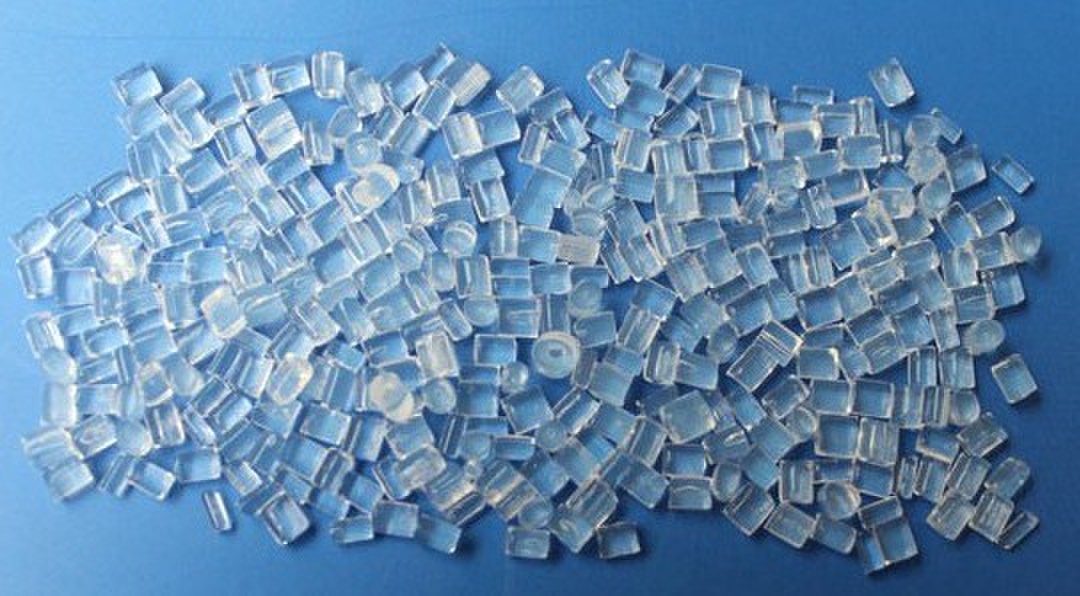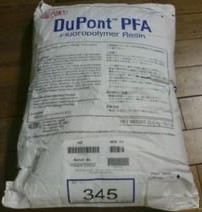
DuPont™ Teflon® PFAD 335D
Fluoroplastic Resin
General Purpose
Dispersion composed of approximately 60% PFA resin dispersed in water. Contains a nonionic wetting agent and stabilizer.
Applications
General-purpose product used in a variety of coating applications, such as heat sealable topcoats
Product Description
DuPont™ Teflon® PFAD 335D is an off-white aqueous perfluoroalkoxy (PFA) dispersion stabilized with a non-ionic surfactant. It is a general-purpose dispersion that can be used to impart some the unique properties of PFA to end products that would be difficult to make using traditional melt extrusion processes. It can be used to coat or impregnate porous structures or to make thin films. It can be coated and melt bonded to polytetrafluoroethylene (PTFE) resin or used as a hot melt adhesive.
The PFA resin in PFAD 335D is a melt flowable thermoplastic, providing superior properties typical of fluoroplastic resins: retention of properties after service at 260℃ (500℉) and useful properties at –240℃ (–400℉).
PFAD 335D aqueous dispersion provides:
• inertness to nearly all industrial chemicals and solvents
• stability at high temperatures
• excellent dielectric properties
• excellent weatherability
• excellent anti-stick properties
Typical Applications
• Heat-sealable top coatings for PTFE-coated fabrics for belting, circuit boards, architectural fabrics and electrical insulation
• Cast film for capacitor dielectrics or chemical barriers
• Holt melt adhesive for PTFE, PFA and FEP parts
• Metal coatings
Food Contact Compliance
Properly processed products (sintered at high temperatures common to the industry) made from Teflon® PFAD 335D resin can qualify for use in contact with food in compliance with FDA 21 CFR 177.1550 and European Regulation (EU) No 10/2011. For details and information, please contact your DuPont representative.
Processing
Conventional coating techniques, such as dip, spray, spin or roller coating, can be used for coating or impregnating high temperature materials with PFAD 335D. Thin coats, usually less than 5 µm (0.2 mil), are applied to prevent mud cracking as the coating dries. The water is normally removed at 120℃ [250℉], followed by heating to remove the wetting agent (typically at 250 - 270℃ [482-518℉]). Final consolidation is done above the 305℃ [581℉] melt point. If the PFAD 335D is being used as a top coat over a PTFE coated fabric or other parts, the coating must be heated to melt the PTFE (approximately 337℃ [639℉]) to maximize adhesion. Prolonged heating above 370℃ (698℉) should be avoided as this could lead to thermal degradation of the PFAD 335D polymer.
Other solid or liquid ingredients can be added to PFAD 335D to provide specific processing or finished product behavior.
Storage and Handling
PFAD 335D must be properly stored to maximize the stability of the dispersion. The PFA particles will settle on prolonged standing and/or on prolonged heating - temperatures above 40℃ (104℉) should be avoided. The dispersion must be protected from freezing, which will cause irreversible settling. The optimum storage temperature range is 7–24℃ (45–75℉). If dispersions are to be stored for extended periods, lowertemperature storage is desirable. For optimal performance, PFAD 335D should be gently mixed or rolled monthly and prior to use.
Ammonium hydroxide is used by DuPont to set the pH to 9.5-11.0 at the time of shipment. High ambient temperatures can deplete the ammonium hydroxide level and reduce the pH. Declining pH eventually favors bacterial growth, which causes odor and scum. The pH of opened containers should be measured and maintained between 9.5 and 11.0.
High-speed stirring, pumping, or any other violent agitation should be minimized to prevent coagulation and to minimize foaming. Ideally, the dispersion should be conveyed by gravity from storage to processing stations.
Storage and handling areas should be clean. Keep dispersion drums closed and clean to avoid both contamination and coagulation by drying at the liquid surface. High processing temperatures will cause even very small foreign particles to become visible or to make defects in finished products. Good housekeeping and careful handling are essential.
Packaging
PFAD 335D is packaged in 114-L (30 gal) non-returnable drums and 1000-L (264 gal) recyclable containers. Contact the local DuPont sales office for package sizes available in your specific geographic area.
| Typical Property Data for DuPont™ Teflon® PFAD 335D Fluoroplastic Resin |
| Property Test |
Test Method |
Unit |
Typical Values |
| Solids Content (% PFA by weight) |
ASTM D4441-04 |
ISO 12086 |
% |
60 |
| % Surfactant based on PFA solids |
ASTM D4441-04 |
ISO 12086 |
% |
6 |
| Density of Dispersion (at 60% solids) |
ASTM D4441-04 |
ISO 12086 |
g/cm3 |
1.50 |
| Dispersion Particle Size, average diameter |
|
DuPont |
µm |
0.20 |
| pH of Dispersion |
ASTM E 70 |
ISO 1148 |
|
10 |
| Brookfield Viscosity (at 25℃) |
ASTM D 2196 |
ISO 2555 |
mPa·s |
25 |
| Melting Temperature |
ASTM D 2116 I |
ISO 12086 |
℃(℉) |
305(581) |
| Melt Flow Rate (MFR 372/5.0) |
ASTM D 2116 I |
ISO 12086 |
g/10 min |
2 |

